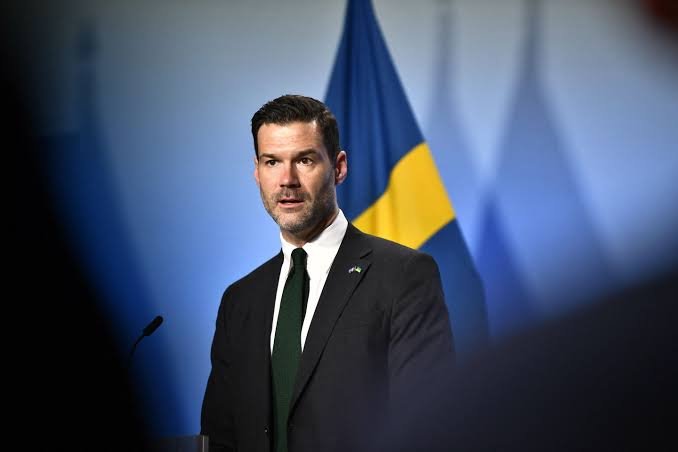By Ademola Tijani
Sweden plans to increase payments to up to $34,000 for immigrants who choose to leave the country, which has long been considered a haven for the war-weary and persecuted, the right-wing government announced recently.
The Scandinavian country was once regarded as a “humanitarian superpower”, but over the years, it has faced challenges in integrating many of its newcomers. Immigrants who voluntarily return to their countries of origin starting in 2026 would be eligible to receive up to 350,000 Swedish kronor ($34,000), according to the government, which is supported by the anti-immigration Sweden Democrats.
“We are in the midst of a paradigm shift in our migration policy,” Migration Minister Johan Forssell told reporters during a press conference where the government unveiled its latest efforts to tighten migration controls.
Currently, immigrants can receive up to 10,000 kronor per adult and 5,000 kronor per child, with a family cap of 40,000 kronor. Immigrant groups could not be immediately reached for comment on the changes.
“The grant has been around since 1984, but it is relatively unknown, it is small and relatively few people use it,” Ludvig Aspling of the Sweden Democrats told reporters. Forssell mentioned that only one person accepted the offer last year. Aspling added that increasing awareness of the grant, along with a higher amount, would likely encourage more people to take the money and leave.
He suggested that the incentive would appeal most to the several hundred thousand migrants who are either long-term unemployed, jobless, or whose incomes are so low that they rely on state benefits to make ends meet. “That’s the group we think would be interested,” Aspling said.
A government-appointed probe last month recommended against a significant increase in the grant, arguing that its anticipated effectiveness did not justify the potential costs. The inquiry, led by Joakim Ruist, warned that a substantial financial increase could send a signal that migrants were undesirable, thereby further complicating integration efforts.
Other European countries also provide grants as incentives for migrants to return home. Denmark, for instance, offers more than $15,000 per person, compared to around $1,400 in Norway, $2,800 in France, and $2,000 in Germany.
Sweden’s conservative Prime Minister Ulf Kristersson came to power in 2022 with a minority coalition government supported by the Sweden Democrats, promising to take a tougher stance on immigration and crime. The Sweden Democrats emerged as the second-largest party in the 2022 election, receiving 20.5 percent of the vote.
Since the 1970s, Sweden has provided generous foreign development aid and has taken in large numbers of migrants, especially since the 1990s. Many of these immigrants have come from conflict-ridden countries, including the former Yugoslavia, Syria, Afghanistan, Somalia, Iran, and Iraq.
In 2015 alone, at the height of the European migration crisis, Sweden accepted 160,000 asylum seekers—the highest per capita rate in the European Union. However, the high unemployment rates among foreign-born residents have widened Sweden’s wealth gap and strained its extensive welfare system.
The 2015 migration crisis marked a turning point, with the then-Social Democratic government announcing that it could no longer sustain its open-door policy. Since then, both left- and right-wing governments have introduced various measures to curb migration, including offering only temporary residence permits to asylum seekers, tightening family reunification rules, and increasing income requirements for work visas for non-EU citizens.
Kristersson’s government also intends to make it easier to expel migrants for substance abuse, ties to criminal groups, or making statements that are seen as threatening Swedish values.



























